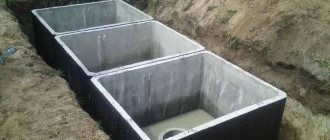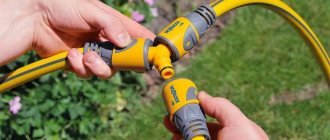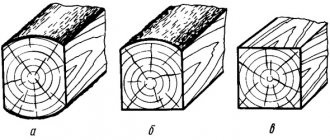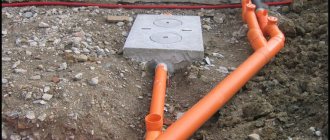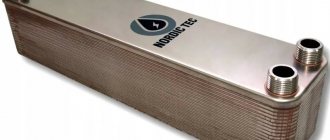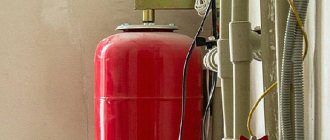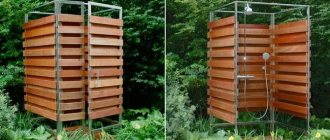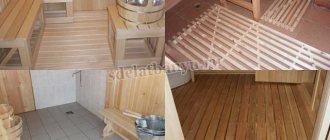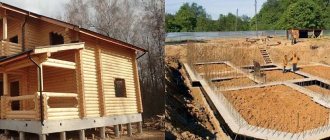Let's look at the rules for equipping an irrigation system, which will ensure that the lawn of your dacha or personal plot will always delight you with fresh, rich greenery. To do this, he needs proper care. This is especially important if the season turns out to be dry and the grass, not having enough moisture, begins to fade and turn yellow, forming withered spots that are unpleasant to look at. The optimal solution in this situation is automatic watering. Let's consider the basic rules for its installation, types, advantages and disadvantages.
The automatic lawn watering system automatically turns on the water supply at the right time Source i.simpalsmedia.com
Need for watering
When purchasing a lawn, you need to remember that it needs moisture, and surface watering will not be enough. For it to be considered correct and of high quality, it is necessary to ensure that water penetrates into the soil at a distance of at least 5-6 cm, which will help maintain colorful greenery for the lawn.
Not everyone has the opportunity to pay a lot of attention to their lawn. This is where automatic lawn watering comes to the rescue, caring for the lush greenery of the lawn on its own. You only need to carefully configure its automation according to the instructions.
Necessary materials
If you are knowledgeable about plumbing and electrical installations, you can install automatic irrigation yourself. The following materials and equipment will be required:
- pump;
- programmable controller;
- wires and corrugated pipe to protect them;
- plastic pipes;
- fittings, tees, valves;
- sprinklers (sprayers).
The installation of pipes is carried out in accordance with the lines that were drawn on the plan.
Irrigation Variations
There are fundamentally different designs that are mounted separately in different cases:
- for flower beds and greenhouses;
- lawns;
- entire summer cottages.
An optimally selected irrigation system can increase productivity and reduce water consumption; in addition, it will greatly improve the appearance of plants planted on the site. This largely depends not only on regular, but also on uniform watering of the area.
Automatic watering of an area with trees Source i.pinimg.com
The landscape irrigation system contains the following components:
- hoses;
- taps;
- valves;
- controllers;
- sprinklers.
All this functions thanks to specially configured programs that operate according to their clearly defined schedule.
An automatic watering system is installed before sowing the grass mixture. This is because laying pipes requires removing the top ball of turf. An alternative option is a drip irrigation system. However, it must be taken into account that they are not capable of serving large lawns.
Project calculation
A specialist will help you perform all the necessary calculations for an automatic garden watering project. You need to calculate:
- site watering rate;
- volume of water tank;
- pump parameters;
- diameter of main pipes and tubes inside zones.
If you have knowledge of hydromechanics, you can carry out the calculations yourself, but it is better to turn to professionals, especially if the territory is large.
Types of irrigation systems
Initially, automatic lawn watering is divided into agricultural and landscape.
Installation of equipment for automatic watering Source images.ru.prom.st
Landscape automatic irrigation is used on private lands:
- Automation - the work schedule is entered into the program and watering takes place strictly according to it.
- Manual – turns on manually.
- Combined - work can be programmed or controlled manually.
We present to your attention the main systems. This information will help you choose the best one for your site:
- Drip and micro-drip.
- Soil and root.
- Sprinklers.
- Fog-forming.
Microdrip irrigation at the dacha is an ideal solution on lands with limited water supplies. It is carried out using a structure that directs water to the roots. This allows the soil to be irrigated as much as possible while using minimal water.
Automatic watering of beds at a summer cottage Source prorab.guru
Subsoil and root automatic lawn watering supplies water directly to the roots of plants. A special feature is the location of the system in the ground. This guarantees maximum efficiency of the structure and the fact that it will not be visible from the outside, that is, it will not spoil the appearance of the site.
Sprinklers create the appearance of summer rain. This automatic garden watering system supplies moisture to the roots and humidifies the air around the plants.
The fogging system involves creating the appearance of fog, this ensures watering with the smallest drops. It is considered the best for caring for “tropical guests”.
Installation of connecting elements
Polymer pipes are fastened together with compression fittings. It is at the connections that leaks can appear over time. Therefore, all tees and taps are mounted in hatches for ease of access.
Such a hatch is not buried in the ground in order to provide quick access to the connections in case of need for repairs. A separate tap is installed for each individual line.Automatic watering installation
Automatic lawn watering must be installed before you begin planting your lawn. The process is carried out in several stages:
- The top layer of soil is removed (about 40 cm)
- Pipe laying in progress
If the lawn has already been planted, its turf layer must be carefully cut off and, after installing an irrigation system, put in place.
Arrangement of irrigation near an alpine hill Source mirsada.kiev.ua
See also: Catalog of companies that specialize in the installation of engineering systems.
It is recommended to group the growing plants before starting to install the automatic watering system. They are planted in groups, taking into account the amount of moisture they need. The site is zoned and water sprinklers with the power required for a particular site are installed.
When the system is installed in an area where bushes or trees grow, it is recommended to install sprinklers with a counter-irrigation stream.
Sometimes, for quality lawn watering, equipment needs to be additionally equipped. For example, if the groundwater in the region is polluted or its technical characteristics do not allow use without preliminary treatment, additional filters will need to be installed.
Even before the onset of frost, it is imperative to drain the remaining water in the system. This will prevent pipes from bursting when frost sets in.
Selection of sprinklers
For individual planting areas in low parts of the site, drip irrigation is the best choice. But the lines for rain and drip irrigation must be separate. Different types of sprayers cannot be installed on the same line.
Different types of sprayers require different system pressures, so you won't be able to adjust the pressure in such an uneven line.
Advantages and disadvantages
With the exception of the high cost of the automatic irrigation system itself and its installation, it has no disadvantages. The only thing that can be noted is the errors made when setting up the automation. Their presence can make the system “overly autonomous”, that is, it will work according to its own rules.
Properly located automatic watering system Source domik.fakt24.info
As for the advantages of the system, compared to conventional watering cans and garden hoses, regardless of the number of various attachments, they are obvious:
- Minimizing time spent on watering
- High-quality soil moisture
- Adjustable water supply
- Water saving
- Additional water filtration options
- Easy to use
- Functions to set the irrigation schedule and its intensity
- Humidity control capabilities - automatic stops irrigation when it starts to rain
- The site can be left without personal control on dry days
- System durability
Proper functioning is guaranteed; additional work will only be necessary when excavation work is carried out on the site.
In addition, do not forget that if you own a large plot of land, you will have to water it daily, by hand on hot summer days. You are unlikely to like it, and you may simply not have the time.
Automatic watering of a large area Source www.pentair.com
See also: Catalog of popular plots in the Moscow region for the construction of a country house.
The automatic watering system performs the task as efficiently and autonomously as possible, without your participation. The source of water supply can be a home plumbing system or an underground well.
To save on installation of the system, you can try to install it yourself. To do this you will need the following equipment:
- Controller
- Solenoid valve
- Filters
- Pumping station
- Pipes
- Sprinkler with nozzle
Each of these components provides a certain stage of the device’s functioning. The most important thing is the controller.
Automatic irrigation system controller Source st.volga.news
This is a kind of computer of a reduced size; in fact, it is the brain of the entire automatic irrigation system, ensuring all its operation. The controller performs the following functions:
- Manages devices
- The program sets the number of waterings
- Turns off watering when it rains
- The controller can be installed both outside and indoors.
The main function of the solenoid valve is to ensure optimal water supply to pipes and sprinklers.
Filters ensure a long service life of the system and clean the water from blockages that could lead to the need for repair. The pump is used when water is supplied from a well. It creates in the system the pressure that is optimal for full watering of the lawn, activating a mechanism consisting of sprinklers and nozzles.
Automatic garden watering Source www.giardinaggio.it
The principle of operation of automatic watering
First, of course, you need a source of water. A pump is connected to it, which will pump water into the system. A liquid distribution unit is connected to the pump.
Pipes are connected to the block, through which water is supplied under pressure to the sprayers. Filters are installed at the beginning of the chain so that contaminants that may be in the water do not clog the system.
Sensors are also installed, which are responsible for automating the entire process. A programmer is connected to the liquid distribution unit.
It is this computerized controller that controls the garden watering system. The controller programs the time at which the sensors should open the valves to supply water.
Preparatory stages
To begin installing the irrigation structure, the following preparatory steps are performed:
- Draw up a project
- Calculate the cost
- Install
- Launch
At the design stage, you need to draw up a plan of the entire area where irrigation is planned. The diagram is also called a dendroplane, on which all plants are marked. The area of the site is measured with a tape measure and a plan with paths, buildings and plants is drawn on a piece of paper.
Preliminary plan for an automatic watering system Source www.termoclick.ru
DIY methods for organizing drip irrigation from plastic bottles
There are several ways to create drip irrigation from plastic containers. The system can carry out surface and subsurface irrigation.
Underground homemade drip irrigation of roots using plastic bottles can be done in several ways. The most popular option is to dig containers between adjacent bushes to a depth of 10-15 cm, bottom down. Along the entire bottle, before it begins to narrow towards the neck, holes should be made using a gypsy needle or awl, 3 cm away from the bottom of the container. The average number of holes is 10-12 pcs. for containers of 2 liters. A container wrapped in thin fabric is dug into a previously prepared hole, filled with water and closed with a lid.
As the container is emptied, which occurs under the pressure of the earth, it may become deformed. To avoid this, you should pierce a hole in the lid to equalize the pressure, and you should also replenish water supplies in a timely manner.
The most popular option for irrigation from a plastic bottle is digging the container between the plants
Another similar option is to place the container with the lid down. To use this method, you need to cut off the bottom of the bottle and screw the cap onto the neck. Holes are made throughout the entire area of the container, not reaching the top by 2-3 cm. The bottle, pre-wrapped in gauze, is placed in the hole and filled with water. To prevent debris from falling into the water, the container is covered on top with a previously cut bottom.
Do-it-yourself subsoil drip irrigation for your dacha can be organized using special oblong-shaped nozzles with holes. They can be bought in specialized stores for summer residents and gardeners. The nozzle is screwed onto the neck of the container instead of the lid. In this case, you should use bottles with a capacity of up to 2.5 liters, since there are no such devices for containers of 5-6 liters. The bottle, neck down, is inserted into the ground to the depth of the nozzle. The bottom of the container does not need to be cut off. After emptying the container, the tip is unscrewed, it is filled with water, and the manipulation is repeated.
Do-it-yourself root and surface drip irrigation from bottles
Using plastic containers, you can carry out root drip watering of the garden, directing drops of water directly under the root of each plant. For this method, it is better to choose a 1.5 liter container. A hole is made in the central part of the lid using a nail. Next, you should cut the bottom of the bottle at an angle of 30-40 degrees. The container itself will be located at the same inclination relative to the ground. The container is secured with several sticks and tape as close to the bush as possible, tilting the neck in such a way as to ensure that water gets directly under the rhizome.
Another option, often used in a greenhouse, involves watering the plant from a distance. To do this, take a small container and a regular ballpoint pen, previously cleaned of paste residues with gasoline or solvent. One end of it is tightly closed with a toothpick or match. The other is inserted into the opening of the bottle. It is better to seal the joint with plasticine.
Drip irrigation from plastic bottles can be root and surface
It is necessary to make holes in the rod, the number and size of which will depend on the required intensity of moistening. It is directed under the root of the plant, depending on which the bottle is dug into the ground to the required depth. The container is filled with water and closed with a lid.
For a small area, you can make a hanging system. To do this, a support is built over the bushes, a metal rod or wire is stretched, from which the bottles will be suspended. A series of small holes should be made in the bottom or lid of the container, which depends on its location. The main advantage of this method is that the water will flow to the plant warm due to the fact that it is heated by the sun.
The container is hung above the bed at a height of 30-50 cm from ground level. The location of the bottle should be chosen based on the optimal contact of drops under the plant, and not on its leaves.
If the irrigation area is small, then you can make a hanging system
